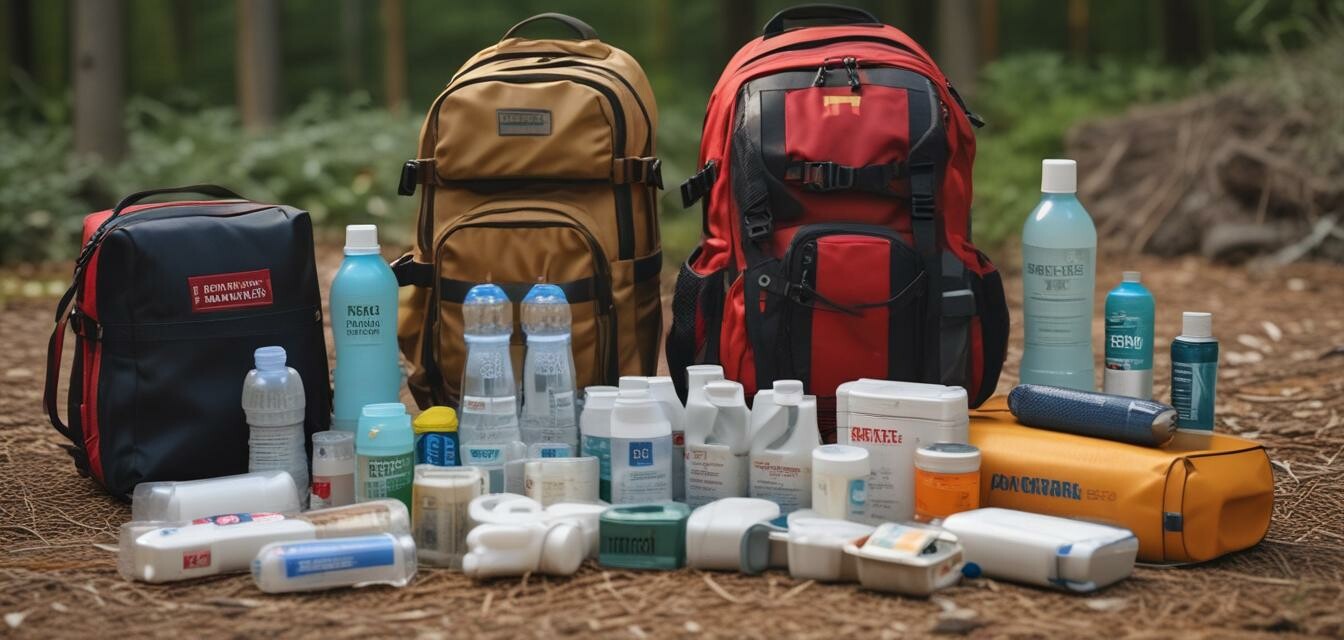
Family Emergency Kit Essentials
Key Takeaways
- Ensure your kit meets the needs of all family members.
- Include essential supplies for various emergencies.
- Regularly check and update your kit items.
- Store your kit in an easily accessible location.
- Utilize reliable energy backup solutions for power outages.
Preparing for emergencies is essential to ensuring safety and peace of mind for your family. An emergency kit tailored to your family’s needs is a critical aspect of your preparedness strategy. This article highlights the essential components to include in your family emergency kit, ensuring all members' needs are met for various emergencies.
Why You Need a Family Emergency Kit
Emergencies can happen at any time, and being prepared can make a significant difference in how you handle unexpected situations. An effective family emergency kit will help you remain self-sufficient during power outages, natural disasters, or other crises. Here's why having one is crucial:
- Provides quick access to essential supplies in stressful situations.
- Ensures adequate preparedness for both short and long-term emergencies.
- Helps cater to the specific needs of family members.
Essential Items for Your Family Emergency Kit
1. Water and Food Supplies
It's advisable to have enough water for each family member, ideally at least one gallon per person per day for three days. Non-perishable food items should also be included, such as:
- Canned goods (vegetables, fruits, soups)
- Granola bars
- Dried fruits and nuts
- Peanut butter
- Ready-to-eat meals
2. First Aid Kit
A well-stocked first aid kit can address minor injuries effectively. Essential items include:
- Adhesive bandages
- Antiseptic wipes
- Gauze pads and adhesive tape
- Pain relievers (e.g., acetaminophen)
- Personal medications (if applicable)
3. Emergency Lighting Solutions
In case of power outages, having reliable lighting sources is vital. Consider including:
- Flashlights with extra batteries
- Headlamps
- Candles and waterproof matches
4. Portable Power Solutions
For keeping your devices charged during emergencies, consider investing in:
- Portable power stations
- Solar charging kits
- Power cables and accessories
For more information about portable power stations, check out our Portable Power Stations page.
5. Multi-Purpose Tools
Multi-tools can come in handy in numerous situations. Include items like:
- Swiss Army knives
- Multi-functional pliers
- Wrenches and screwdrivers
6. Personal Items and Important Documents
Keep copies of essential documents and personal items, including:
- Identification cards (IDs, passports)
- Health insurance information
- Emergency contact numbers
7. Pet Supplies (if applicable)
If you have pets, don’t forget to include supplies for them as well, such as:
- Pet food and water
- Leash and collar
- Pet medications and vaccination records
8. Clothing and Shelter
It's good practice to include weather-appropriate clothing and emergency blankets. Examples include:
- Sturdy shoes or boots
- Extra clothing layers
- Hand warmers
- Tents or tarps for shelter
Organizing Your Family Emergency Kit
Keeping your emergency kit organized ensures that you can find what you need quickly. Consider the following tips:
- Use a sturdy, waterproof backpack or box for storage.
- Label compartments for easy access to specific items.
- Regularly review and update the contents based on your family's needs.
Maintaining Your Family Emergency Kit
Regular maintenance of your emergency kit is crucial for its effectiveness. It's recommended to:
- Check expiry dates on food and medications every six months.
- Replace batteries in flashlights and other devices.
- Conduct a family drill to ensure everyone knows where the kit is and how to use its contents.
Tips for Beginners
- Start small by gathering essential items and gradually expand your kit.
- Involve all family members in the planning process for greater awareness.
- Research additional items based on your geographic location and specific risks.
Pros
- Enhances family safety during emergencies.
- Improves peace of mind when prepared.
- Encourages thoughtful emergency planning.
Cons
- Initial investment cost for quality supplies.
- Requires regular upkeep and monitoring.
Conclusion
Having a well-prepared family emergency kit is an essential component of your overall preparedness strategy. By ensuring all members' needs are met and maintaining your kit regularly, you can be more confident in your ability to handle unexpected situations. For additional tips and resources on emergency preparedness, visit our Preparedness Tips category.
